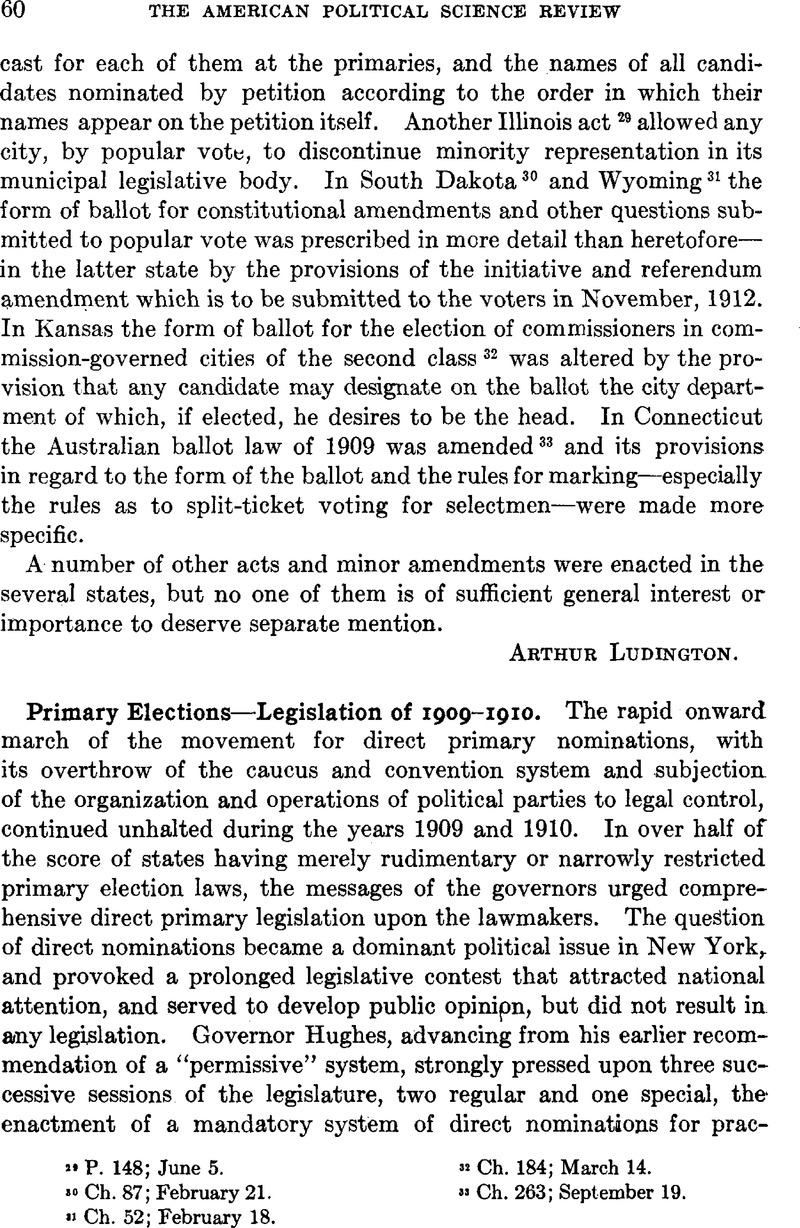Article contents
Primary Elections—Legislation of 1909–1910
Published online by Cambridge University Press: 02 September 2013
Abstract

- Type
- Notes on Current Legislation
- Information
- Copyright
- Copyright © American Political Science Association 1912
References
1 Hereafter in this summary the term state will be applied to all nine without distinction.
2 See “Notes” in this Review, II, 271–72, 417–21; III, 561–62; IV, 569–71.
3 Ia., Kans., Mo., Nebr., No. Dak., Okla., So. Dak., Wash., Wis.
4 Idaho also requires three nominees for state offices at the last general election.
5 The secretary of state, treasurer, and comptroller.
6 Corresponding to district attorneys or state's attorneys in other states.
7 In Ariz, and N. H. the important judicial positions are filled by appointment.
8 Md. by act of 1908, while Mich, reënacts the provision of her law of 1907.
9 Provided the party vote equals ten per cent of the total vote of the state.
10 The Hinman-Green bill, before the New York legislature in 1909 and 1910, provided for the designation by party committees of candidates for nomination, who were to have first place on the primary ballot, but it failed to become a law.
11 Those of Ariz., Calif., Colo., Mich., Nev., N. H.
12 See “Notes” in this Review, III, 563–65, for a more complete treatment.
13 In Maryland this ground had already been covered in her corrupt practices act of 1908.
- 1
- Cited by



Comments
No Comments have been published for this article.